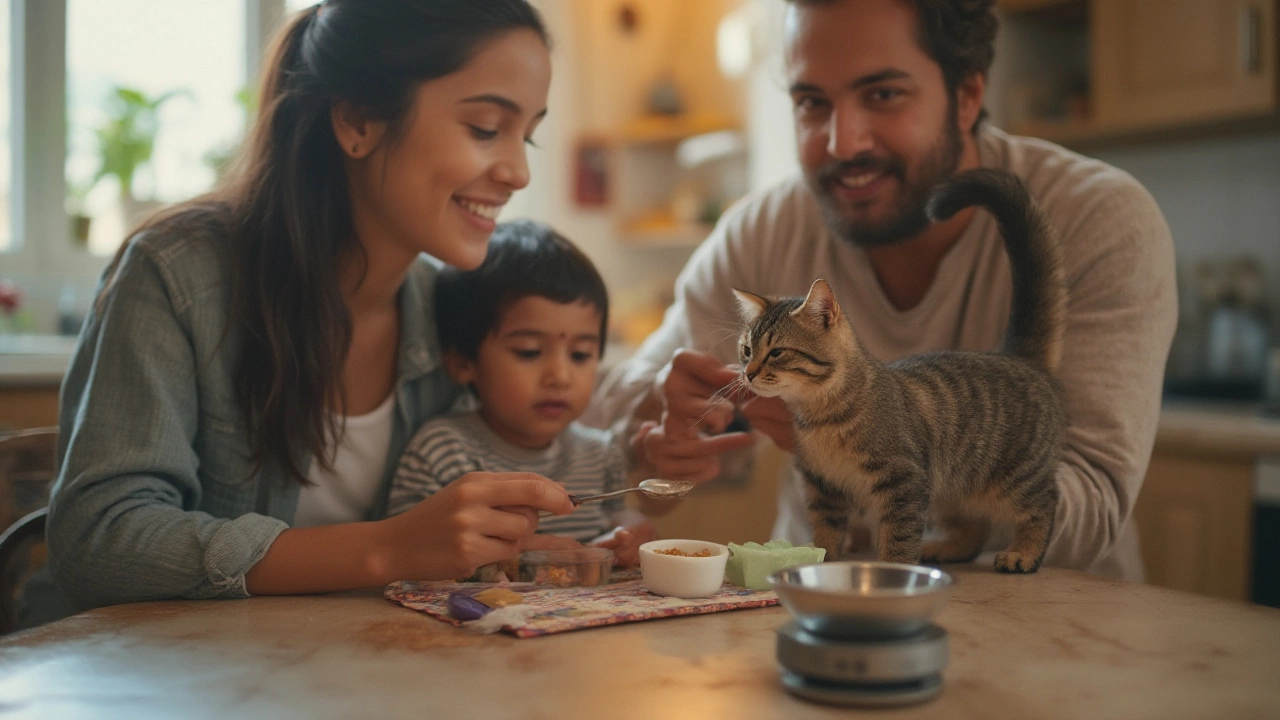Daily Cat Nutrition: Practical Feeding Tips for a Healthy Cat
If you’ve ever stared at a bowl of kibble and wondered if it’s enough, you’re not alone. Cats need a balanced diet every day, but the right balance depends on age, activity level, and health status. Below you’ll find clear, bite‑size advice you can start using right now.
How Often Should You Feed Your Cat?
Most adult cats do well on two meals a day, spaced roughly 12 hours apart. This routine mirrors their natural hunting pattern – a burst of energy followed by a nap. Kittens, on the other hand, need three to four small meals because their tiny stomachs can’t hold much at once. If you’re feeding a senior cat, keep the same twice‑daily schedule but watch for signs of reduced appetite; older felines sometimes benefit from a small evening snack.
Consistency is key. Serve meals at the same times each day, and remove any uneaten food after about 30 minutes. This helps your cat learn when to expect food and prevents overeating. If your cat is a picky eater, try a measured portion of wet food mixed with dry kibble to entice them without overloading calories.
What to Add to Dry Food?
Dry kibble is convenient and helps keep teeth clean, but it can be low on moisture. Adding a splash of water or a spoonful of low‑salt broth can improve texture and boost hydration. For extra nutrition, mix in a tablespoon of canned pumpkin (plain, not pie filling) – it’s a gentle source of fiber that aids digestion.
When it comes to protein, a small amount of cooked chicken, turkey, or fish works well. Make sure it’s unseasoned and bone‑free. Some owners also sprinkle a pinch of powdered egg shell for calcium, but only if your vet says it’s safe for your cat’s health profile.
If you prefer to keep things simple, choose a high‑quality wet food that lists real meat as the first ingredient. Wet meals supply the moisture cats naturally seek from prey, and they often contain fewer fillers than kibble. Pair a 3‑oz can of wet food with a quarter cup of dry kibble for a balanced meal.
Watch the calorie count. A typical adult cat needs about 20 calories per pound of body weight each day. Use the feeding guidelines on the bag as a starting point, then adjust based on your cat’s weight and activity. A quick weigh‑in each month will tell you if you need to cut back or add a little extra.
Finally, keep fresh water available at all times. Some cats prefer a pet water fountain because the moving water mimics a stream. If your cat drinks less than a half cup daily, try placing multiple bowls around the house.
By feeding on a regular schedule, mixing wet and dry meals wisely, and adding simple, vet‑approved toppings, you give your cat the daily nutrition it needs to stay playful and healthy. Remember, every cat is unique, so keep an eye on weight, coat condition, and energy levels – they’re the best clues that your feeding plan is on track.

How Much Wet Food Does a 10 lb Cat Really Need? Daily Feeding Tips & Guide
Discover how much wet food a 10 lb cat needs daily, tips on portion control, and why the right amount matters for your feline’s health.
read more

